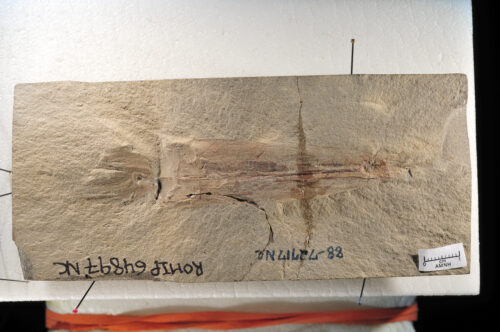Image courtesy of Christopher Whalen.
Some 330 million years ago, an unassuming soft-bodied cephalopod was buried and fossilized by an influx of sediment in the sea, covering modern-day Montana. In a paper recently published in Nature, Christopher Whalen at the Yale Department of Earth and Planetary Sciences describes this earliest known vampyropod—which isa group of cephalopods that includes octopods and vampire squid. Now called Syllipsimopodi bideni, this squid lookalike pushes the fossil record of vampyropods back 81.9 million years. The genus name aptly means ‘prehensile foot,’ while the species name is a nod to Joe Biden’s presidency. “We named it after Biden to celebrate his inauguration and because of his policies to fund science and address anthropogenic climate change,” Whalen said.
S. bideni had ten arms, each with two rows of suckers, with one pair of arms longer than the remaining four pairs. Whalen speculates that the longer arms were used to initially capture prey, while the shorter eight arms manipulated its prey during feeding. All known vampyropods other than S. bideni have eight functional arms, implying that one pair was lost somewhere in their evolutionary history. Another unique trait of this presidential vampyropod is the presence of a gladius, a sword-shaped remnant of an internal shell that only true squids and vampire squids still possess. “This has important implications for our understanding of the fossil record and how we model cephalopod interrelationships,” Whalen said. The finding provides evidence against the prevailing model suggesting vampyropods descended from a group of Triassic squid-like cephalopods.

